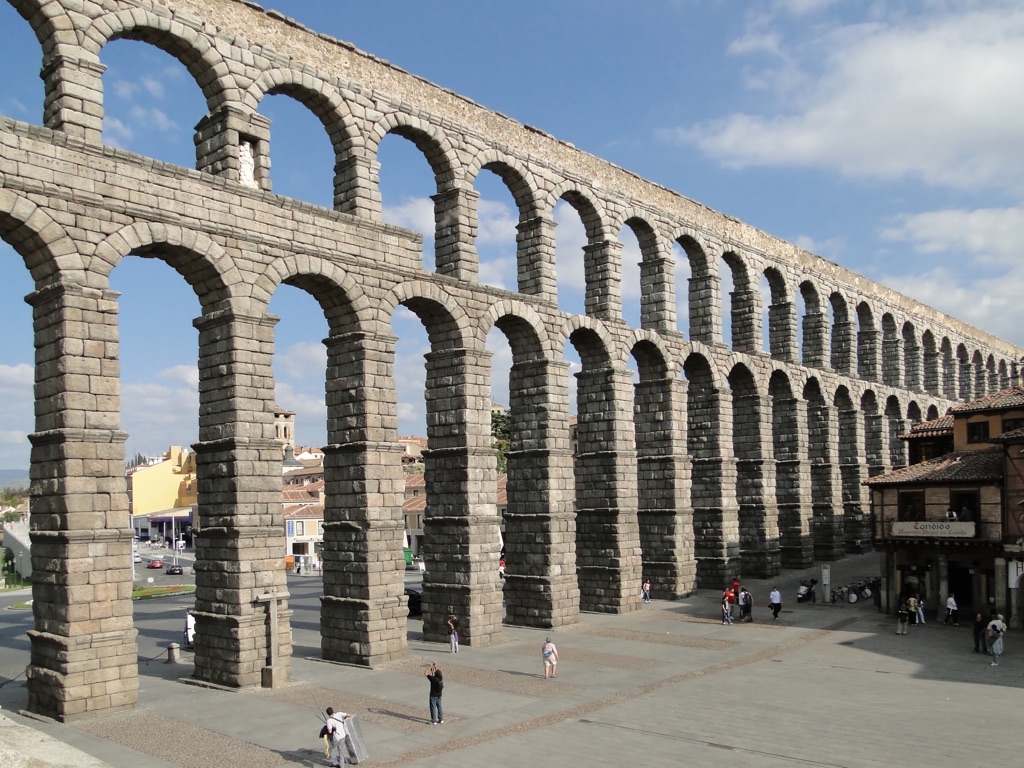The Aqueduct of Segovia: A Timeless Roman Marvel
The Aqueduct of Segovia, known in Spanish as Acueducto de Segovia, is a Roman architectural masterpiece located in Segovia, Spain. Built around the first century AD, this aqueduct channeled water from mountain springs 17 kilometers away to the city’s fountains, public baths, and private houses, serving the city until 1973. With its impressive arcade of 167 arches, the aqueduct is a symbol of Segovia, prominently featured on the city’s coat of arms. In 1985, the Old Town of Segovia and the aqueduct were declared a UNESCO World Heritage Site.
Get your dose of History via Email
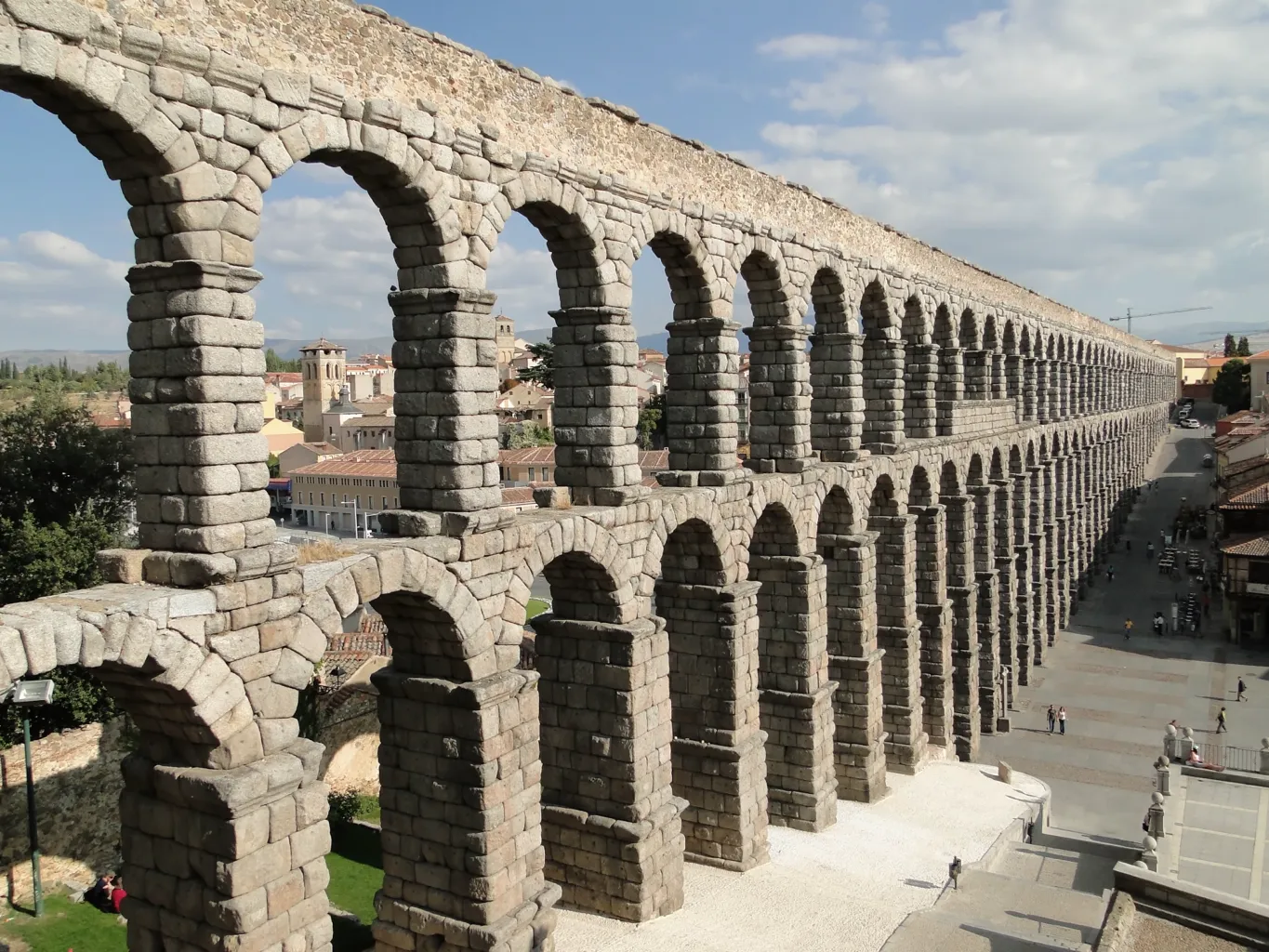
Historical Background
While the exact date of the aqueduct’s construction remains uncertain, it is generally believed to have been built during the reign of Emperor Domitian (AD 81-96). Géza Alföldy, a scholar who studied the remnants of a dedication plaque, proposed 98 AD as the completion date. More recent archaeological evidence, however, suggests it might have been completed after 112 AD, possibly during the reigns of Trajan or Hadrian.
Segovia’s early history is equally enigmatic. The area was initially inhabited by the Arevaci people before the Romans conquered it. Roman soldiers stationed in the region eventually settled there, bringing Roman infrastructure and culture with them.

Engineering and Architecture
The aqueduct once transported water from the Rio Frio River in the La Acebeda region, running 15 kilometers before reaching the city. The construction adhered to the principles outlined by Vitruvius in his “De Architectura,” ensuring a durable and efficient structure.
The water was collected in a tank known as El Caserón (the Big House) and then led to the Casa de Aguas (Waterhouse) for decanting. The aqueduct bridge conveyed the water over rocky terrain to the walled city center, culminating in a spectacular display at Plaza de Díaz Sanz and Plaza Azoguejo. At its highest point, the aqueduct reaches 28.5 meters, with nearly 6 meters of foundation. The structure consists of 75 single arches and 44 double arches, totaling 167 arches.
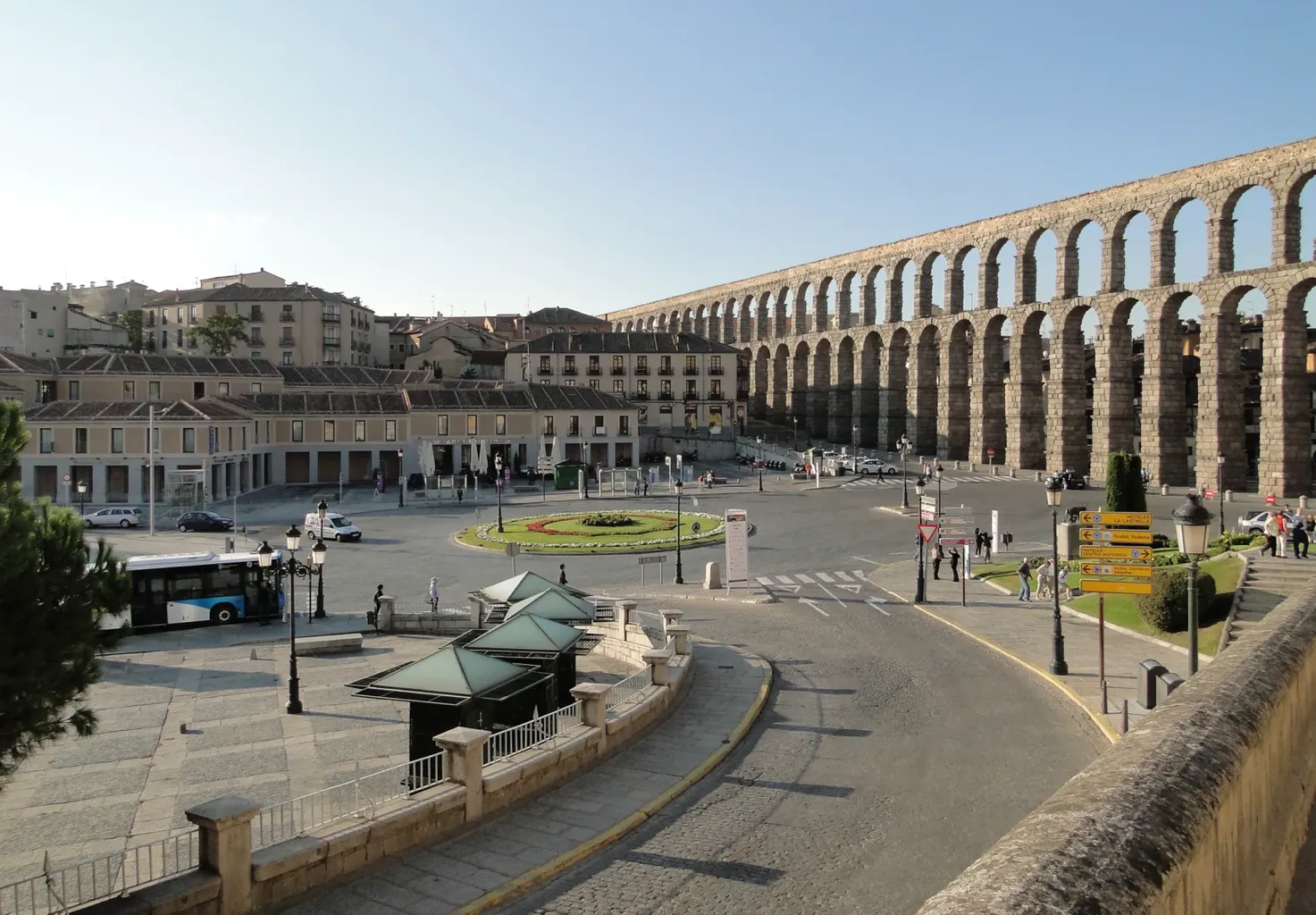
Built from unmortared granite blocks, the aqueduct exemplifies Roman engineering prowess. During Roman times, bronze letters on the tallest arches displayed the builder’s name and construction date. Although these inscriptions are lost, niches remain, one of which now holds an image of the Virgin, replacing the original Hercules statue.
Water Distribution
Within the walled city, a castellum aquae distributed the water via a subterranean network. Though details of this system are not fully known, the main channel’s route is marked on Segovia’s pavements, illustrating the aqueduct’s extensive reach.
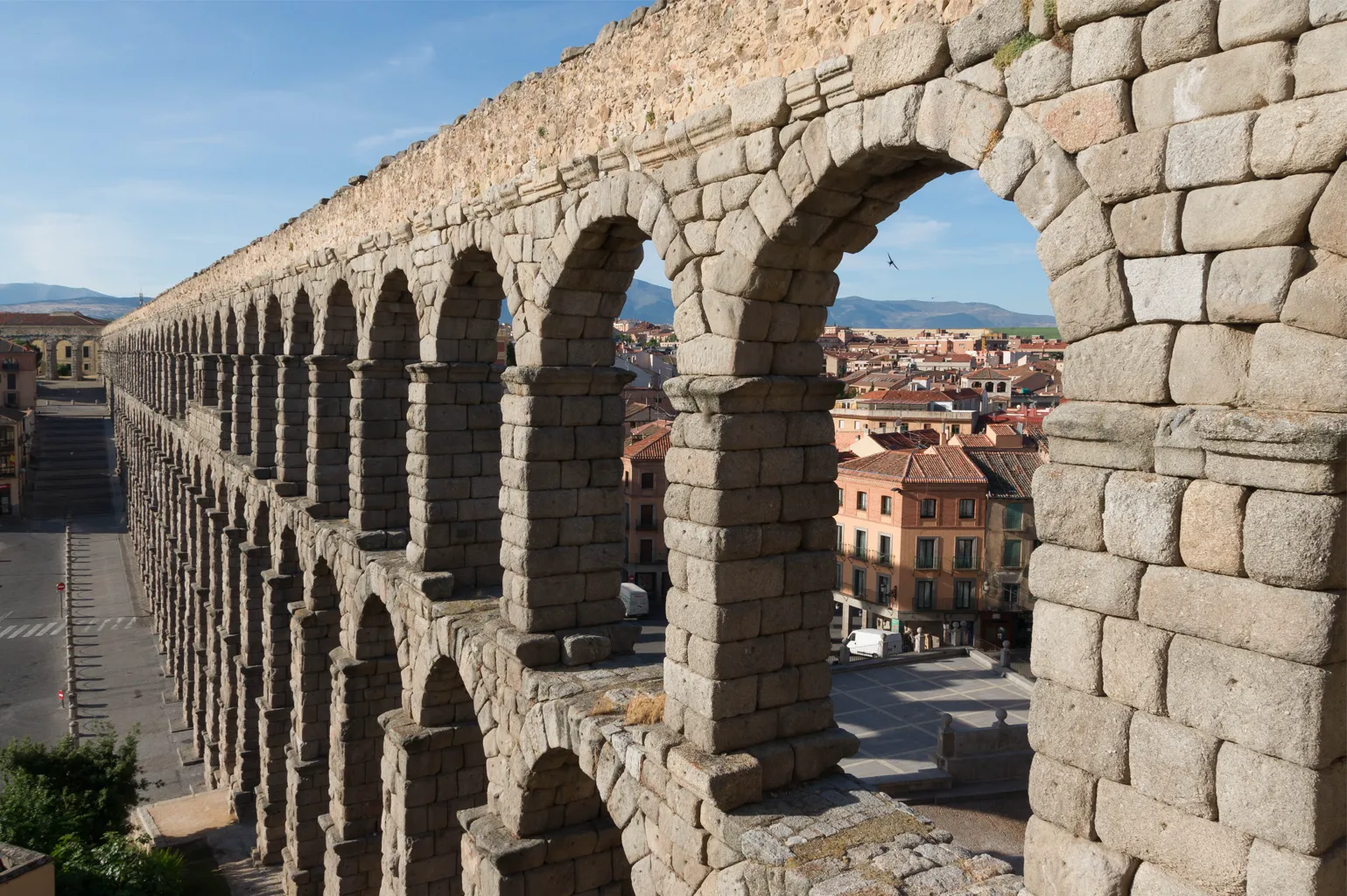
Restoration and Preservation
The first significant restoration of the aqueduct occurred under the Catholic Monarchs, King Ferdinand and Queen Isabella. Led by Don Pedro Mesa, the project carefully preserved the original style, restoring 36 arches. Additional restoration in the 16th century added central niches and statues.
Despite centuries of use, the aqueduct remained functional and well-preserved until the mid-19th century. Modern challenges, such as stone decay and water leakage, led to the aqueduct’s inclusion in the 2006 World Monuments Watch. The World Monuments Fund, along with various local and national institutions, collaborated to implement preservation efforts, supported by American Express.
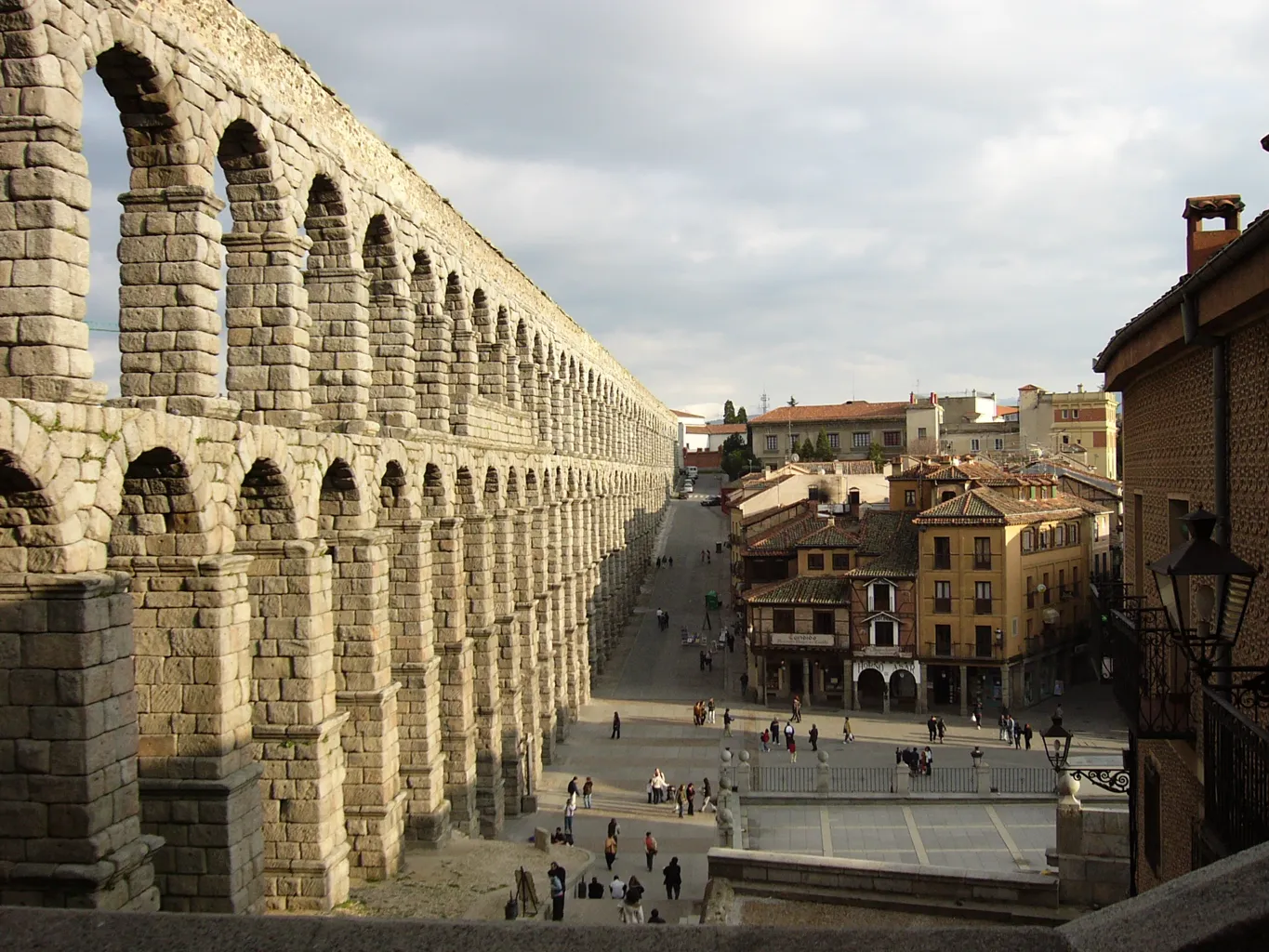
Interpretation and Legacy
Segovia’s former mint, the Real Casa de Moneda, now houses an aqueduct interpretation center funded by European Economic Area grants. The mint and aqueduct share a historical connection, as coins minted in Segovia used the aqueduct as a mint mark, and the mint’s machinery was water-powered, drawing directly from the River Eresma.
The Aqueduct of Segovia stands as a testament to Roman engineering and a symbol of the city’s enduring heritage. Its preservation allows visitors to marvel at the ingenuity of ancient Rome and appreciate the historical significance of this remarkable structure.
Sources:

